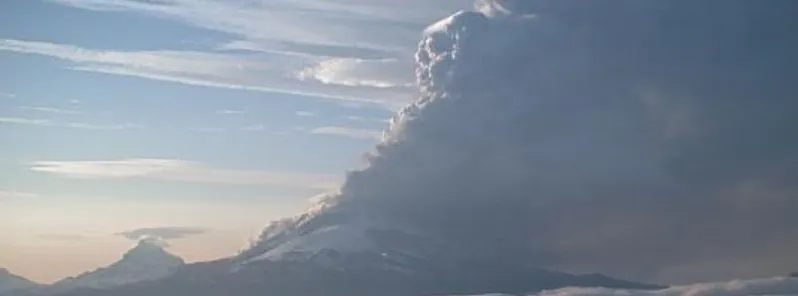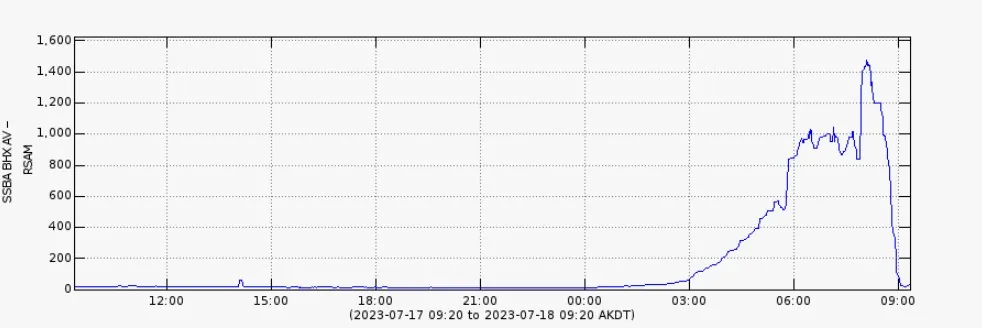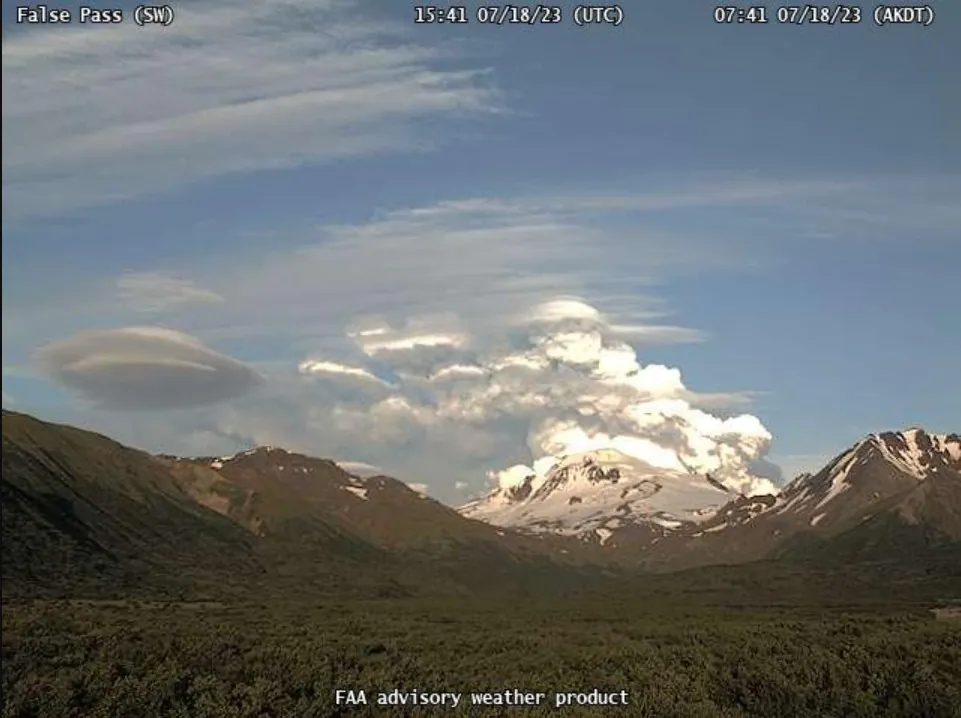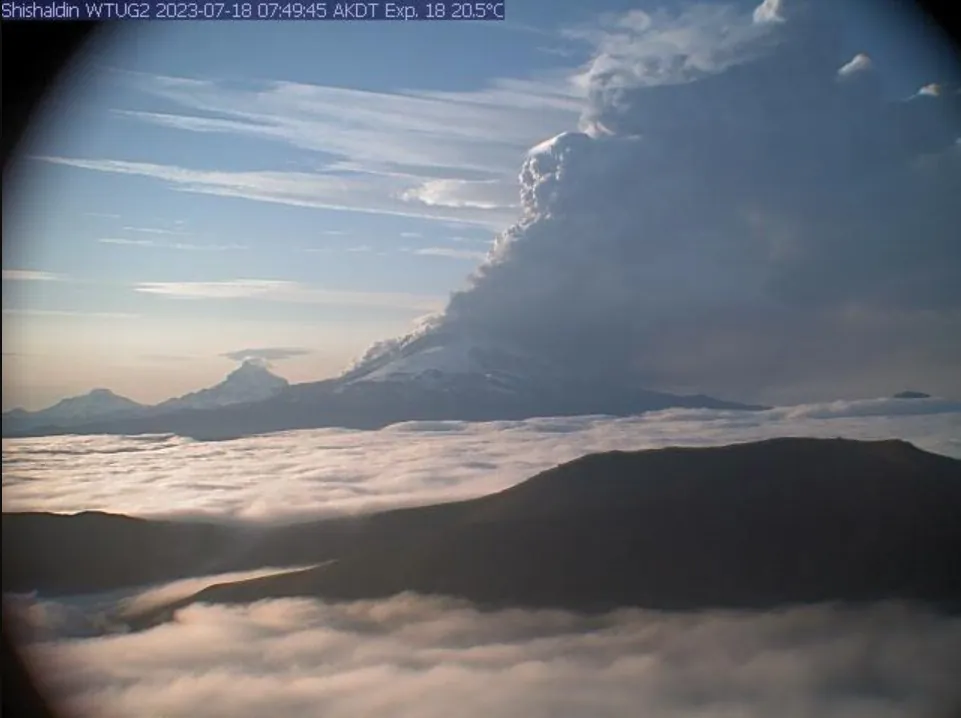Large ash emissions at Shishaldin volcano, Aviation Color Code raised to Red, Alaska

Volcanic activity at Shishaldin volcano in Alaska, U.S. further increased on July 18, 2023, with increased lava flow and large ash emissions. As a result, the Aviation Color Code was raised to Red.
Eruptive activity at the volcano began increasing starting around 09:00 UTC on July 18, with increased lava eruption from or within the summit crater. At the time there were still no significant ash emissions.
This activity was detected on regional infrasound arrays, increasing seismic tremor, and elevated surface temperatures in satellite data. Overnight webcam images confirmed glowing from the summit with only minor ash emission.


A rapidly growing ash emission was observed starting at 15:00 UTC, drifting SSE.
In response, the Aviation Color Code was raised to Red and the Volcano Alert Level to Warning. The National Weather Service has also issued a SIGMET for this activity.
At 16:37 UTC, AVO reported ash cloud with an initial height of around 7 km (30 000 feet) above sea level.

Geological summary
Shishaldin is the highest and one of the most active volcanoes of the Aleutian Islands. The 2 857 m (9 379 feet) high, glacier-covered volcano is the westernmost of three large stratovolcanoes along an E-W line in the eastern half of Unimak Island.
The Aleuts named the volcano Sisquk, meaning “mountain which points the way when I am lost.” A steady steam plume rises from its small summit crater. Constructed atop an older glacially dissected volcano, it is Holocene in age and largely basaltic in composition.
Remnants of an older ancestral volcano are exposed on the west and NE sides at 1 500 -1 800 m (4 920 – 5 900 feet) elevation. There are over two dozen pyroclastic cones on its NW flank, which is blanketed by massive lava flows.
Frequent explosive activity, primarily consisting of strombolian ash eruptions from the small summit crater, but sometimes producing lava flows, has been recorded since the 18th century.2
References:
1 ALASKA VOLCANO OBSERVATORY DAILY UPDATE – U.S. Geological Survey – July 18, 2023
2 Shishaldin – Geological summary – GVP
Featured image credit: AVO/USGS

Commenting rules and guidelines
We value the thoughts and opinions of our readers and welcome healthy discussions on our website. In order to maintain a respectful and positive community, we ask that all commenters follow these rules.